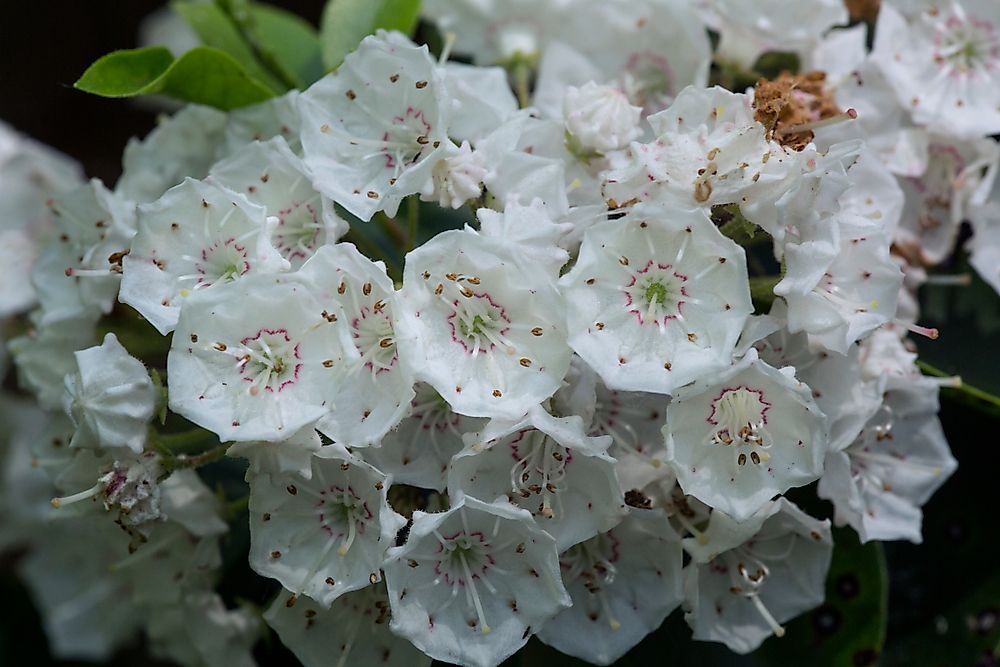What Is The State Flower Of Connecticut?

The mountain laurel is the designated state flower of Connecticut. It is a beautiful plant that is also a state symbol of Pennsylvania. The flower was designated the official status by the General assembly of Connecticut in 1907. The mountain laurel is also known as the calico bush, ivybush, clamoun, spoonwood, lambkill, or the sheep laurel.
The white and pink star-shaped flower has attracted attention since it was first recorded in the country in 1624. The shrub is native to the eastern US from northern Florida to southern Maine and west to Louisiana and Indiana. The star-shaped flowers bloom in clusters of either pink, white, or red. The blooming season begins in early May and ends in late June. The stamen of the mountain laurel eject pollen when tripped by bees; the mechanism allows the pollen to attach to the body of the insects.
Facts About The Mountain Laurel
- The mountain laurel is a flowering plant native to the eastern USA, from Maine to Florida, and west to Louisiana and Indiana.
- The shrub can grow to a height of 20 feet (6.1 Meters)
- The leaves of the plant are alternate. Each leaf is 1.5 to 5 inches long and ½ to 1.5 inches wide.
- Every part of the laurel plant is poisonous and should not be ingested
- The plant was first discovered in the US in 1624, but it was named after Pehr Kalm, who sampled it in the18th century.
- The Laurel can grow to a width of 30-feet in and 10-feet in height.
- The Laurel has a thin, dark-reddish bark with scales and narrow ridges.
- The mountain laurel grows in thickets, and cover large parts of forests floors
- The wood of the laurel is strong and therefore used to make furniture and tobacco pipes.
The mountain laurel grows across the eastern half of the United States including Connecticut. During bloom, beautiful flowers lineup the roadsides along Interstate 95. Each year, thousands of visitors visit the Haystack Mountain State Park to view the blossoms.











